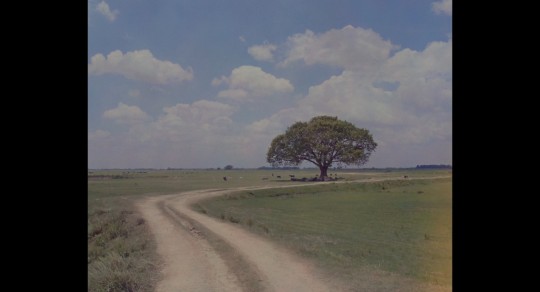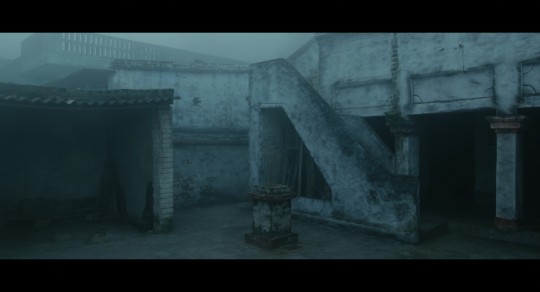#gamak
Explore tagged Tumblr posts
Text
Gamak Ghar, 2020
Every single frame can be a painting or a photograph. A visual masterpiece that instills wonder, nostalgia, and melancholy.
Thank you, Achal Mishra.




#cinema#film#indian cinema#indian#gamak ghar#art#film stills#films#film review#movie review#movies#achal mishra#nostalgia
7 notes
·
View notes
Text






Gamak Ghar (Achal Mishra, 2019)
5 notes
·
View notes
Text


THIEVES (2023) dir. Michelle Williams Gamaker
0 notes
Text
Gamak Motor
Dünya genelinde sayılı şekilde bulunan fabrikalarda üretilen Gamak motor modelleri, orta ve alçak gerilim özelliklerine sahiptir. Alüminyum ve pik gövdeli, 56-630 tip ve 0,06-3.000 kW güç aralığına sahip model seçenekleri bulunur. Geniş bir model yelpazesine sahip olarak uyguların kaliteli hale gelmesi sağlanır.
Gamak Motor Yüksek Performans
Gamak motor modellerinde bulunan performans ve dayanıklılık benzersiz motor tanımını fiziksel olarak ortaya koyar. Özel tasarımlara sahip olan motorlar güvenilir şekilde tercih edilirken uygulama alanı seçimi oldukça esnek tutulabilir. Uygulama için en iyi tasarımların sonucunda ortaya çıkan motor modelleri, geliştirilmiş teknik özelliklere sahiptir. Endüstride kullanım ihtiyaçlarını karşılamaya yönelik şekilde tasarlanan motorlar özellikle verimlilik konusunda sık tercih edilmesine neden olur.
0 notes
Text
Dungeon Sentispace
pt: dungeon sentispace
reminder beings will almost definitely not turn out exactly as described, and these can be edited and changed as needed.
“How dare you step foot on my grounds?!”
Name: Gamak, Rohnok, Asom, Dungeon, Draco, Drake, Dorm, Crazar, Arnum
Age: Ageless and/or Factoidcronal
Pronouns: It/It , Ix/Ixs , ve/vem/veir/veirs/vemself , chill/chills , blade/blades , sin/sinister , ??/?? , 🗡️/🗡️s , ⚔️/⚔️s , 🛡️/🛡️s
Gender: Agender, Gorture , Bladintri , Genderbladed , Genderwound
Attraction: Abro & Auto (romantic and sexual), Liturael Attraction, Inimicual Attraction
Species: Spirt inspiriting the Dungeon
Aesthetic(s): DungeonCore , Dungeonpunk , Dark Fantasy
Misc Info: A old spirt that found ixself stuck trapped in the walls of this dungeon. The spirt is not always welcoming of visitors but over time may gets use to the fact people happen to walk though its dusty halls. The spirt may be a bit of a trickster or just a general nuisance to those who live or are in its walls, this can be by slamming doors, locking doors, knocking over objects, etc.
pt: name , pronouns , gender , attraction , species , aesthetic(s), misc info




#build a headmate#build an alter#alter creation#build a system#headmate creation#willogenic#✦ sentispace#🎼 mod 🎹#ANTI RQ#ANTI RQ Headmate pack
15 notes
·
View notes
Text

Happy Birthday @sara-rosesff hamadema sarthakawa karagannath gamak gahanna kiylaath parissamin inna kiyalath wish karanawaa ❤️
Always best as Canary ❤️
0 notes
Text
Important tips for playing indian bamboo flute
Playing the Indian bamboo flute, or bansuri, requires dedication and practice. Here are some important tips to help you develop your skills and play beautifully:
1. Proper Holding Technique
Grip: Hold the flute with your left hand on top and right hand on the bottom. Your fingers should cover the holes completely but lightly.
Position: Keep the flute horizontal, parallel to the ground, and angle it slightly downwards for better airflow.
2. Correct Posture
Relaxed Posture: Sit or stand with a straight back and relaxed shoulders. Avoid tension in your neck and shoulders.
Head Position: Keep your head straight and slightly tilt it forward to create a good embouchure.
3. Embouchure and Breath Control
Embouchure: Place the blowing hole just below your lower lip. Form a small aperture with your lips and blow a focused stream of air.
Breath Control: Practice controlling your breath to produce a steady, even tone. Use diaphragmatic breathing for better control and endurance.
4. Finger Placement and Technique
Covering Holes: Ensure that your fingers cover the holes completely to avoid air leaks, which can affect the sound quality.
Finger Movement: Practice smooth and quick finger movements to transition between notes cleanly.
5. Developing a Good Tone
Long Tones: Practice playing long, sustained notes to develop a clear and stable tone. Focus on maintaining a consistent airflow and pitch.
Dynamics: Experiment with different breath pressures to produce various dynamics (soft and loud tones).
6. Scales and Ragas
Basic Scales: Start by learning basic scales like Sa-Re-Ga-Ma-Pa-Dha-Ni-Sa. Practice them regularly to build familiarity with the finger placements.
Ragas: Gradually learn and practice different ragas, understanding their specific note patterns, moods, and ornamentations.
7. Ornamentation and Techniques
Meend (Glides): Practice sliding between notes smoothly to create a flowing sound.
Gamak (Rapid Oscillations): Learn to play quick, oscillating notes for added expression.
Murki (Grace Notes): Incorporate quick, decorative grace notes to embellish your playing.
8. Rhythm and Timing
Tala Practice: Learn and practice different talas (rhythmic cycles) using a metronome or tabla accompaniment.
Consistency: Maintain consistent timing and rhythm, which is crucial in Indian classical music.
9. Listening and Imitation
Listen to Masters: Regularly listen to recordings of renowned bansuri players to understand their techniques and styles.
Imitate and Learn: Try to imitate the phrases and nuances you hear, incorporating them into your practice.
10. Regular Practice
Daily Practice: Commit to regular, focused practice sessions. Consistency is key to developing and maintaining your skills.
Variety: Include a mix of exercises, scales, ragas, and compositions in your practice routine to keep it engaging and comprehensive.
11. Patience and Perseverance
Be Patient: Progress can be slow, and mastering the bansuri takes time. Stay patient and persistent.
Enjoy the Journey: Focus on enjoying the learning process and the beautiful sounds you create, rather than just the end goal.
12. Teacher Guidance
Find a Guru: If possible, learn from a qualified teacher or guru who can provide personalized guidance and feedback.
Feedback: Regularly seek feedback and be open to constructive criticism to improve your playing.
By following these tips and dedicating yourself to regular, mindful practice, you can develop proficiency and artistry on the Indian bamboo flute.
Call pratanu banerjee 91-8017517171 online and offline class
flute class at performing artist society

1 note
·
View note
Photo

Кресло «Комфорт» - Никулина (2024)
Кресло «Комфорт»
relax_gamak - Наталья Никулина
Авторский мастер-класс по плетению кресла «Комфорт» от Relax Gamak. Это кресло состоит из двух колец и комплекта удобных подушек. В нем комфортно разместится и взрослый, и ребенок. А благодаря достаточно компактным размерам для него найдется место даже в небольшой квартире.
Я по��ностью обновила этот МК, перезаписав его от начала и до конца
ЧТО НОВОГО?
• секреты работы с витыми и с ажурными стропами
• 5 видов...
Читать далее
Подробнее на https://eground.org/threads/kreslo-komfort-nikulina-2024.114800/?&utm_source=tumblr&utm_medium=autopost&utm_campaign=project_21975&utm_content=post_36982465
0 notes
Text
The Enchanting Sitar: Strings of India's Musical Heritage
In the realm of musical instruments, few evoke the sense of mystique and elegance quite like the sitar. Originating in India, this iconic stringed instrument has captured the hearts and souls of musicians and music lovers worldwide. Join us on a melodious journey as we explore the enchanting world of the sitar.
A Brief Introduction to Sitar
The sitar is a stringed instrument characterized by its long neck, resonant gourd-shaped body, and a set of sympathetic strings that add depth and resonance to its sound. Its design is as intricate as the melodies it produces, with numerous strings, pegs, and bridges that require skill and precision to play.
A Rich History of Melody
The history of the sitar can be traced back to ancient India, where it evolved from earlier stringed instruments. It gained prominence during the Mughal period, and since then, it has become synonymous with Indian classical music. Sitar maestros like Ravi Shankar and Vilayat Khan have elevated its status to a global icon.
The Elegance of Sound
What sets the sitar apart is its ability to produce a vast range of sounds, from the hauntingly meditative to the energetically vibrant. The plucking of its strings, combined with the use of meend (string bending) and gamak (ornamental techniques), creates a unique and mesmerizing tonal quality. This sonic versatility makes the sitar an instrument of profound expressiveness.
The Sitar in Classical Music
In the world of Indian classical music, the sitar plays a central role. It is often the lead instrument in traditional ragas (melodic modes) and accompanies vocalists with its evocative melodies. Sitar performances are a spectacle of virtuosity, as the musician navigates intricate compositions with precision and emotion, drawing the audience into a trance-like state.
Global Influence and Fusion
Beyond classical music, the sitar has left its indelible mark on the global music scene. Artists like George Harrison of The Beatles and Brian Jones of The Rolling Stones introduced the sitar to Western audiences in the 1960s, contributing to its popularity in fusion and contemporary genres. Today, it can be heard in world music, jazz, and even electronic music, showcasing its adaptability and timeless appeal.
A Cultural Gem
In conclusion, the sitar is more than just an instrument; it's a cultural gem that embodies the spirit of India's musical heritage. Its ability to transcend cultural boundaries and evoke deep emotions has made it a cherished instrument worldwide. As you listen to the melodic strains of the sitar, you are transported to a world where music is a language that transcends words, a world where each note carries the weight of centuries of tradition and the promise of infinite possibility. So, let the sitar's strings serenade your soul, and let its melodies carry you on a timeless journey of musical discovery.
0 notes
Text
Different Types of Sitar Techniques and Gharanas
The sitar is a mesmerizing and intricate musical instrument that has captivated audiences for centuries. Its distinctive sound and unique playing techniques make it an integral part of Indian classical music. In this article, we will explore the different types of sitar techniques and gharanas, shedding light on the rich heritage and diversity of this beautiful instrument.
Table of Contents
Introduction
The Sitar: A Brief Overview
Basic Sitar Techniques
Proper Sitting Posture and Hand Positioning
Picking and Plucking Techniques
Bending and Sliding Techniques
Prominent Sitar Gharanas
Maihar Gharana
Senia Gharana
Imdadkhani Gharana
Etawah Gharana
Jaipur Gharana
Notable Sitar Players and their Techniques
Ravi Shankar
Vilayat Khan
Nikhil Banerjee
Shahid Parvez
Fusion of Sitar Techniques in Contemporary Music
Conclusion
FAQs
1. Introduction
The sitar, with its distinct resonance and complex structure, is an iconic instrument in Indian classical music. It is known for its resonating strings, gourd resonator, and its long neck with movable frets. Sitar playing involves a combination of plucking, picking, sliding, and bending techniques, all of which contribute to its unique sound.
2. The Sitar: A Brief Overview
The sitar originated in the Indian subcontinent during the medieval period and has evolved over time. It is a stringed instrument made of seasoned wood, featuring a large resonating gourd and a hollow neck. The strings are plucked with a metallic plectrum known as a "mizrab" or "mezrab," creating melodious and enchanting notes.
3. Basic Sitar Techniques
3.1 Proper Sitting Posture and Hand Positioning
To play the sitar effectively, it is crucial to maintain the correct sitting posture. Sit cross-legged on the floor with the sitar resting on your lap. The left hand is responsible for pressing the strings on the frets, while the right hand plucks the strings near the bridge.
3.2 Picking and Plucking Techniques
The sitar employs a combination of picking and plucking techniques. The index finger of the right hand is used to pluck the melody strings, while the middle finger plucks the drone strings. The mizrab or mezrab is worn on the index finger of the right hand to facilitate smooth plucking.
3.3 Bending and Sliding Techniques
Bending and sliding are crucial techniques in sitar playing that allow the artist to achieve intricate and emotive melodies. Bending involves applying pressure to the string with the left hand and gradually changing the pitch. Sliding, on the other hand, involves smoothly transitioning from one note to another by gliding the finger along the string.
4. Prominent Sitar Gharanas
Sitar playing is influenced by various gharanas, which are essentially schools or traditions of music. Each gharana has its unique style, emphasizing specific techniques and ornamentations. Here are some notable gharanas:
4.1 Maihar Gharana
The Maihar Gharana, founded by Ustad Allauddin Khan, is renowned for its blend of dhrupad and khayal styles. It emphasizes meend (sliding), gamak (ornamentation), and intricate taans (fast melodic phrases).
4.2 Senia Gharana
The Senia Gharana traces its roots back to the legendary musician Mian Tansen. It focuses on meend, gamak, and meendkari techniques, and is characterized by its soulful and introspective approach to sitar playing.
4.3 Imdadkhani Gharana
The Imdadkhani Gharana, founded by Ustad Imdad Khan, is known for its expressive and intricate playing style. It emphasizes the use of intricate taans, rhythmic patterns, and fast meend techniques.
4.4 Etawah Gharana
The Etawah Gharana, established by Ustad Imdad Khan's son, Ustad Enayat Khan, is characterized by its emphasis on technical brilliance and complex rhythmic patterns. It incorporates elements of vocal music into sitar playing.
4.5 Jaipur Gharana
The Jaipur Gharana is famous for its vibrant and energetic style. It emphasizes intricate and fast taans, striking rhythmic patterns, and dynamic improvisation techniques.
5. Notable Sitar Players and their Techniques
Several virtuosos have contributed significantly to sitar playing, each with their distinctive style and techniques. Here are a few notable sitar players:
5.1 Ravi Shankar
The legendary Ravi Shankar was instrumental in popularizing the sitar worldwide. His unique playing style showcased brilliant taans, intricate meend techniques, and powerful emotional expressions.
5.2 Vilayat Khan
Vilayat Khan, a maestro of the sitar, was known for his innovative techniques and soulful renditions. His playing style encompassed complex rhythmic patterns, mesmerizing meend, and captivating taans.
5.3 Nikhil Banerjee
Nikhil Banerjee's playing style was characterized by his exceptional finger technique and soul-stirring melodic improvisations. His mastery over meend, taans, and intricate rhythmic patterns made him a revered sitarist.
5.4 Shahid Parvez
Shahid Parvez is renowned for his mesmerizing stage presence and dynamic playing style. His ability to effortlessly blend traditional techniques with contemporary influences has earned him international acclaim.
6. Fusion of Sitar Techniques in Contemporary Music
The sitar's versatility has enabled its fusion with various genres of music, including jazz, rock, and world music. Many contemporary musicians incorporate sitar techniques into their compositions, creating a unique and captivating fusion of sounds.
7. Conclusion
The sitar is a magnificent instrument that has stood the test of time, captivating listeners with its enchanting melodies. Its diverse techniques and gharanas reflect the rich heritage and evolving nature of Indian classical music. Whether played in traditional or contemporary styles, the sitar continues to evoke emotions and transport audiences to a world of profound musical beauty.
Instagram: @thepinklotusacademia
Facebook: @thepinklotusacademia
Faculty: Soumitra Thakur
Enquire Now: Click Here

0 notes
Photo




Production Design and construction (2022-23) for Thieves (dir.) Michelle Williams Gamaker Domes for Michelle (2022) exhibited at South London Gallery as part of Our Mountains Are Painted on Glass (2023) Images 1 and 4: Jo Underhill 2023
0 notes
Text
When Son Takes Father For An Interview
‘It started with an image of a father and son riding a bike on a winter morning.’ IMAGE: A scene from Dhuin. Photograph: PTI Photo After the success of his debut feature film Gamak Ghar, Director Achal Mishra says he was at the crossroads about his next when he came across Dhuin, an idea that kept playing in his mind in the form of an image of a father-son riding a bike on a winter…

View On WordPress
1 note
·
View note
Photo


amaryllis, an english major:
#watches her daughter chew on the dolls whose lives she has painstakingly constructed#gamak#* magnolia peytal#* amaryllis peytal#i didn't gaussian blur the backgrounds but i'm :/ about opening up ps again today lmfao so#oh well#but! the apartment is cute so who cares#gameplay
4 notes
·
View notes
Text
Happy birthday bossa 🏹 gamak gahan lesatama ❤️ no matter what happens machan we are always with you 😎
Happy Birthday Arrow 💚 - @sudumal-arrow

0 notes
Text



Gamak Ghar (2019)
Dir: Achal Mishra
Happy Chhath Puja
#chhath puja#happy chhath puja#indian festivals#hindu festival#desi aesthetics#indian aesthetics#india#desi cottagecore#gamak ghar#achal mishra#indian cinema#indian film#indian films#film#south asian film
32 notes
·
View notes